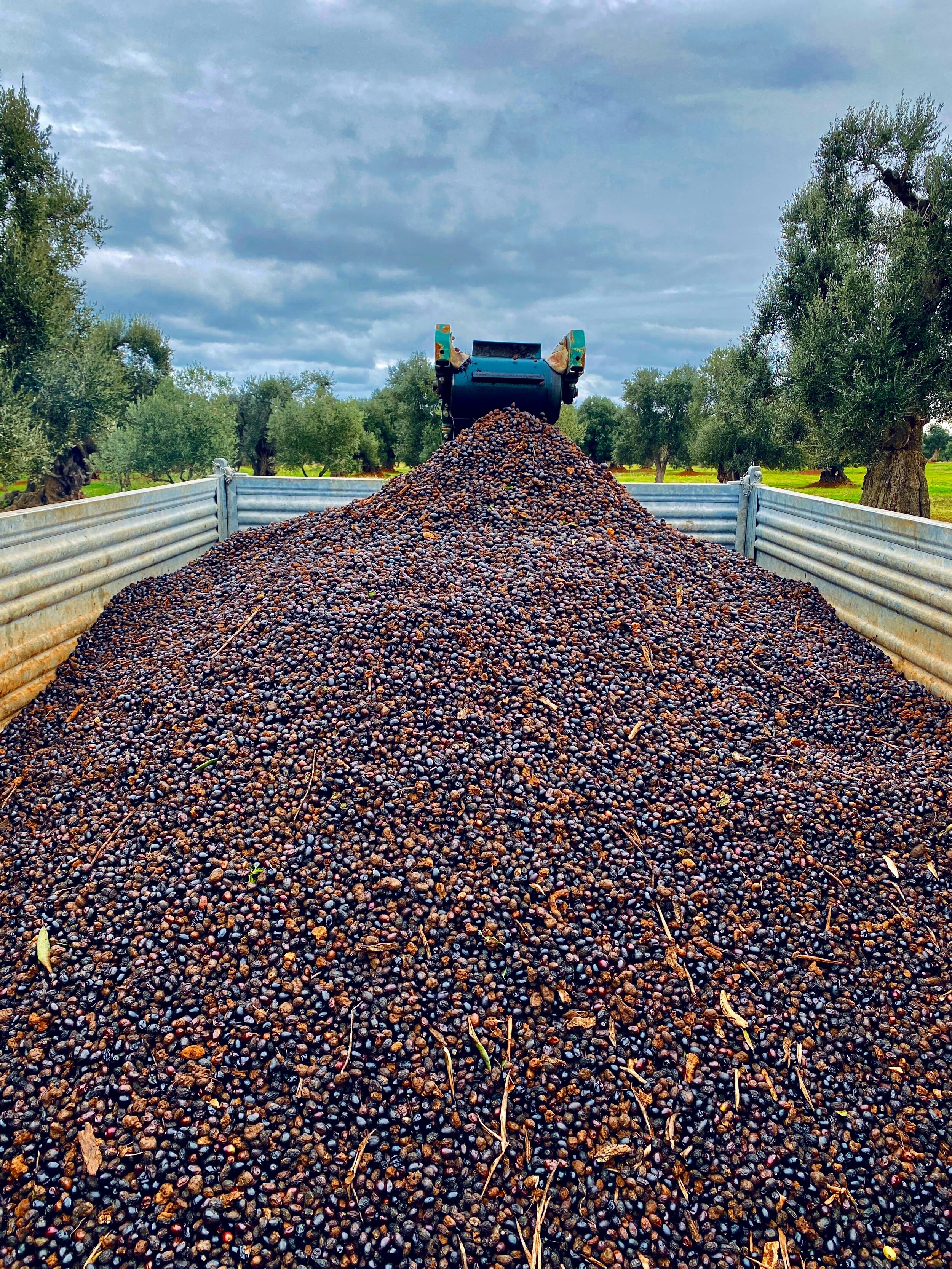Di Terra
Intensely terracotta colored and soaking wet, the ground constitutes a heavily saturated and worked field. Sturdy in still picture as it may appear, we feel the weight of the earthen with every step in the process of harvesting olives di terra we take; its amassed configurations building up heavy wedges under our boots while demanding forceful raking of mud enwrapped olives (away from the nearest area of the trunks for more easy collection with the ride sweeper). Dusty in the dry form as it commonly occurs, the currently waterlogged matter clings to any surface it touches base with, making them, the surfaces that is, in need of continuous removal of mud, and in places, of mashed–olives–mud–sludge. The earthen matter together with the humid air create a much different, not to say a quite demanding, situation of harvest than that of sundried orchards void of much too moisty grounds.
Situated in such (a)mass, the wheels of the vehicle spin yet remain in place. Or, at least somewhat in place anyways, for while the vehicle forcefully moves in its sliding motion, making deeper and wider marks in the mud as the wheels spin round and round without giving forward drive to the assemblaged tractor and platform body, such as wanted by Giovanni in his attempt to impel relocation of it, the vehicle nonetheless remains stuck.
The platform body, by this time of the day heavily loaded with a volume amounting to roughly 30 quintals—a measure equaling almost 3 tons and one commonly used to denote the quantity of harvested olives—tilts, causing me to both once and twice worryingly playing out a scenario in my mind of how it tumbles over and spills all olives back onto the soil, once more to be picked up di terra. Fortunately, the rather dreadful scenario of my imagination never occurs and severely entrenched in the moist ground as it so were, Giovanni and the tractor momentarily sit tight, awaiting to be towed by the heavier tractor that is on its way from an orchard nearby. Momentarily immovable from its position as it were, the tractor–platform–assemblage shortly thus becomes transferred to more solid grounds. So does the olive sorting machinery that is used to sort out olives from the leaves, stones, and mud lumps that become collected with them, for while that equipment never got stuck in the mud such as the tractor and platform body, it is well on its way to so become, and this is unwanted for, much like all the excessive earthen matter with which olives under these conditions become harvested.
The olives are what is wanted; the rest just so happens to come with their collection from the ground, including various substances and the continuous removal of such matters alike. Whether leaves or branches, muddy lumps or stones, any excessive earthen materials being brushed up by the ride sweeper as it moves over the olive filled grounds under the yet much olive filled canopies, become sorted out by yet another mechanized apparatus, leaving mostly olives to drip down onto the platform body. Traces of them though, all the unwanted matter that is, occur constantly cleared off rubber straps and grills using handheld putty knives with longer and shorter handles; left on the ground remains traces of them, too, together with too small of olives to be moved pass the caviated surface of the grills.
Aquatic matters as these muddy of harvest conditions are too, I have for the purpose of this post chosen to emphasize matter of, so to speak, the earthen element. However, categorical as such a distinction herein may be featured, the flow of material substances, not least the transformation of one by the means of others, occur much less distinguishable and much more dynamic in the setting of its occurrence than herein reflected. Thus, while I in a later post will emphasize significances of watery flows, the flows per se may arguably be the more important thing to consider and to contextually account for.






































